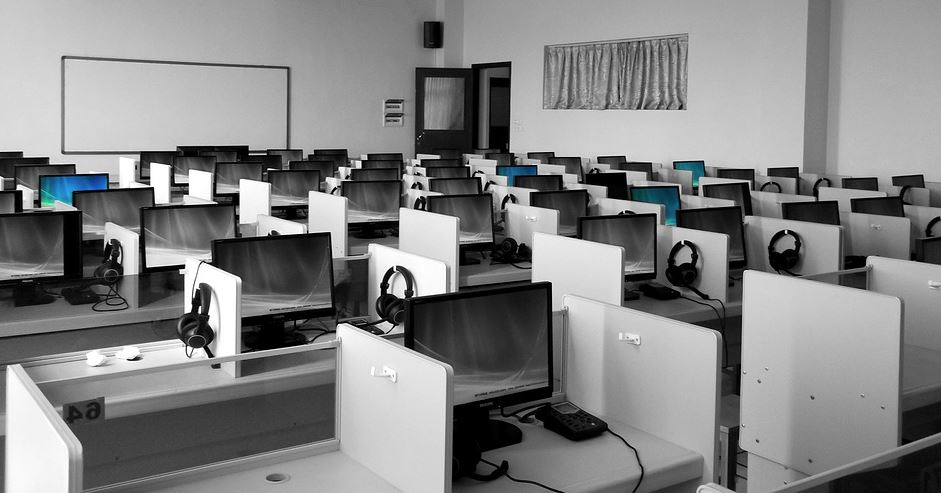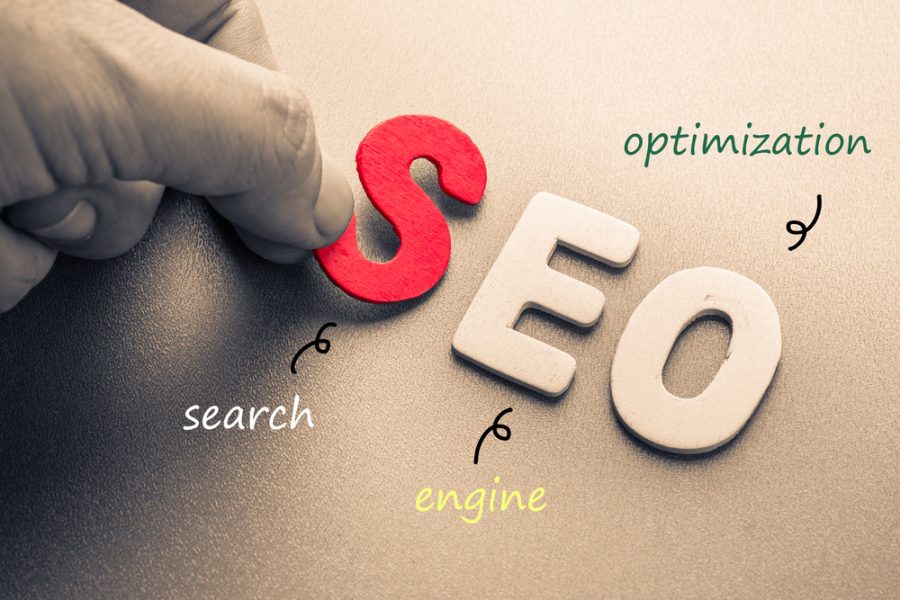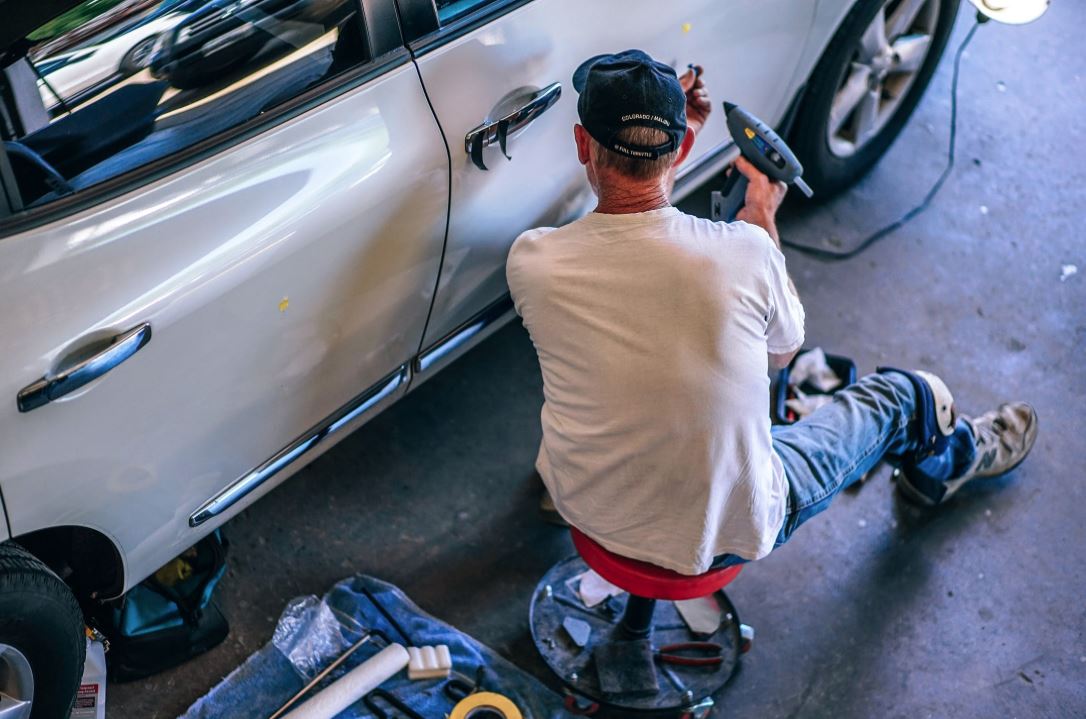Drinking water is turning into a precious commodity. On the one hand, it appears we are depleting all the clean water sources at a blinding pace, but on the other hand, scientists are always finding new and inventive ways to make previously undrinkable water safe for consumption. One of these effective methods is known as commercial UV disinfection, and here are the things you should know about it.
What is it?
UV disinfection as a piece of technology is not particularly hard to understand, and that is a part of its appeal. It essentially uses UV light in the wavelength that is known to sterilize the microorganisms – it is also known as the germicidal wavelength range. This “framework” ranges between 200 and 300 nanometers, and the optimal wavelength for this kind of disinfection is 264 nanometers.
How does it work?
This wavelength doesn’t only have a profound effect on microorganisms on the microscopic level – it puts the cornerstone of their destruction on the molecular level. The energy of this wavelength, also known as UV-C, is absorbed into the very DNA of microorganisms, which also include viruses and spores. This, in turn, causes abnormalities in the “programming” of the DNA, which means microorganisms under the UV disinfection systems will either be destroyed immediately or rendered unable to reproduce and invade.
Of course, the effectiveness of this UV dosage depends on how high it gets. Some forms of bacteria can survive harsh environments, so a dosage of 40 mJ per square centimeter is quite enough to disinfect basically every human pathogen in the sample of water. This method is so reliable, it is in fact used in some industries.
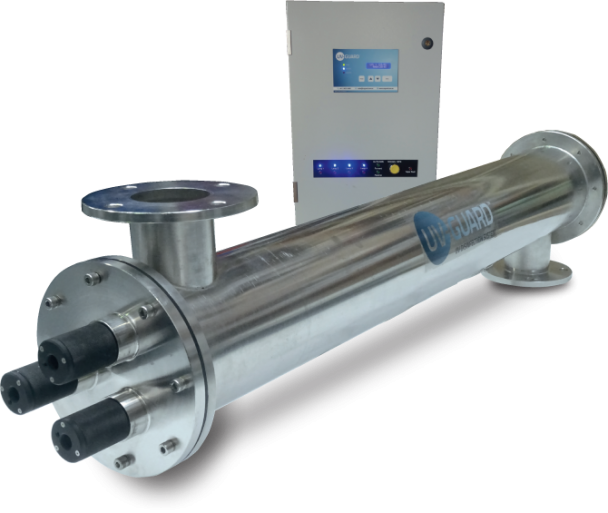
What exactly is log reduction?
An effective UV disinfection system achieves a log reduction of 99.9%. This means there is still 0.1% of microorganisms unaffected by the processing, which is an acceptable and reasonable margin. Of course, the bigger the amount of water used, the bigger the number of surviving microorganisms. This is the robust mathematical nature of log reduction.
Therefore, naturally it is important to choose the system based on how many gallons per minute (GPM) it can process. This is why it is important to know how much water you generally use and in what part of the household you plan to implement the system.
What are the types of UV-C germicidal lamps?
Modern commercial UV water treatment systems come in different types as they are suited to different applications:
- Standard Low Pressure (LP) UV Lamps are suited to applications where flow rates are lower and exposure time can be longer. They have low operating currents usually between 180 mA and 425 mA and range from 10W to 40W in power.
- Low Pressure High Output (LPHO) germicidal lamps operate between 600 mA and 800 mA and they can be used where there are larger flow rates or UV dose requirements are greater.
- Low Pressure High Output (LPHO) Amalgam UV Lamps offer 3-4 times higher power than standard LP and LPHO UV Lamp types.
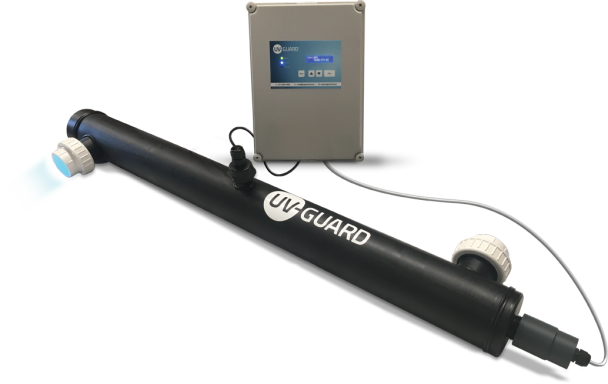
What about the installation?
UV water treatment systems come in various shapes, but if you have a chance to choose, it’s best to choose the one that looks like a long tube. Remember, compact UV systems will be more expensive because they have to utilize a stronger UV lamp.
As far as space requirements are concerned, you can (and should) measure the size of the entire contraption and double that required space. You need enough “elbow space” to make lamp and sleeve replacement easier. UV systems are typically installed vertically.
What are the components?
The system is encapsulated in stainless steel, and they contain at least one or multiple UV lamps. These lamps are typically installed within quartz sleeves. Thanks to these sleeves, the UV light from the lamps will penetrate the water, but the lamp itself will not come into contact with it, so there’s really nothing to worry about. This way, you’ll end up with safe tap water free of microorganisms.
It is not only about finding a way to disinfect and clean water – it is also about cost effectiveness. Scientists and engineers are constantly racing with time and the market to provide us with the most elegant and unobtrusive ways to clean water without digging deep into our pockets. The goal is rather simple – let the water cleaning be simple, effective and cheap. For now, there are several methods that work like a charm, and when it comes to ridding water of bacteria and other germs, UV disinfection is way ahead of the pack.

